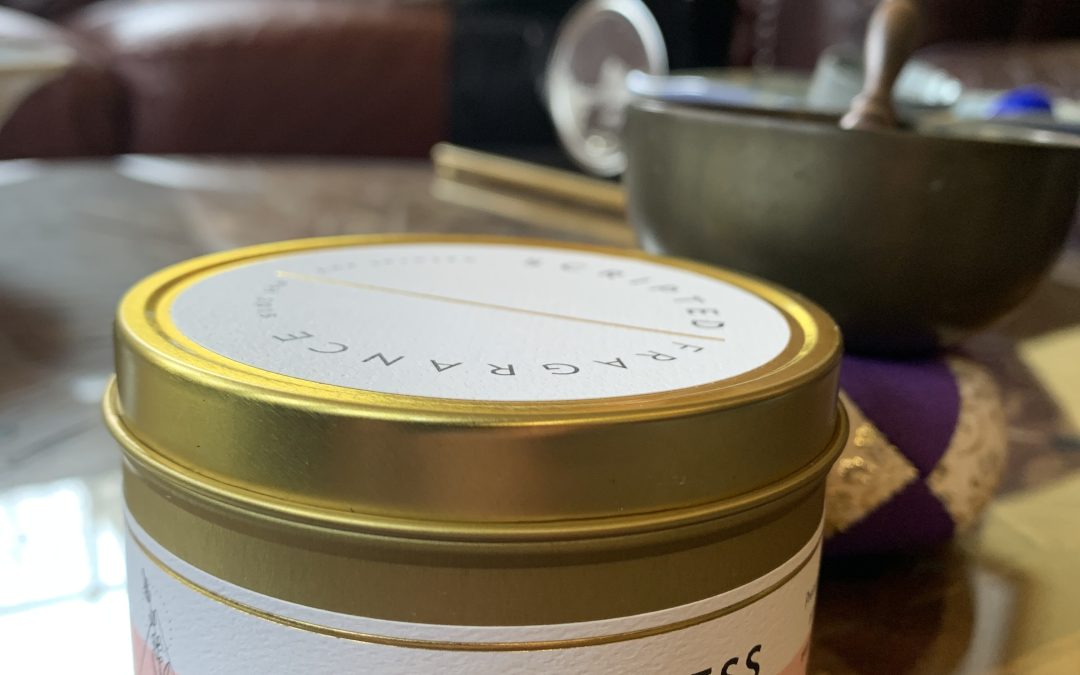I went to my mailbox at work earlier this week and saw a bulky small envelope stuffed in it. I was not expecting a delivery so what could this be? I won’t keep you in suspense….and you may have guessed from the photo. I opened the envelope to find this candle, labeled MINDFULNESS CANDLE. In with it, I found a hand-scribbled note from a former client. “Saw this and thought of you. :0)”
How thoughtful! How nice! Correct? Yes, it was all those things. However, there was another element to this package and the attached note that is not readily seen with the naked eye. What was that element?
Sarcasm.
The client sending me this candle had struggled for a long time with the idea of USING SKILLS and, most especially, MINDFULNESS. “I can’t do mindfulness”, she would often say to me. “My mind is going all over the place.” Anytime we initially tried to do a mindfulness exercise, she would “abort mission” within about 20-30 seconds. “I must stop. This isn’t working.” Despite my coaxing and support, the exercise would quickly end.
Yet, I remained undeterred. This was not my first rodeo. I have taught clients mindfulness skills for over 25 years, and I knew that there was more possibility for her (as I had seen for others).
I would bring our work back to a focus on the use of skills, but I learned to just not use the WORD “SKILLS” or (especially) MINDFULNESS. I would simply ask, “So, what are you noticing right now?” She would answer with her awareness of what was happening and what she had noticed in the previous minute or so. Like a cat waiting in front of a mouse hole, I would then smile and say, “Hm, sounds to me like you are being MINDFUL.”
There are many different definitions of mindfulness. One that I like the most was contained in my training on Dialectical Behavior Therapy. Mindfulness is “an awareness of the inner world of thoughts and feelings and the outer world of actions and perceptions.” With that awareness, we can decide where to focus our attention.
Back to my client.
Over time, she learned how to slow down and notice her thoughts and feelings. She became more skilled at redirecting her attention when in distress. She developed mindfulness skills that served as a foundation of healthy coping for her. When she finished treatment, she would still roll her eyes about THAT MINDFULNESS STUFF, and we would have a good laugh. However, she was a believer. The hidden message in that package was, “I’m out here practicing mindfulness. You successfully brainwashed me.”
So, what is the moral of the story? Buy a candle.
No…wait, that is not it. The real moral of the story: Don’t give up so easily on mindfulness. You don’t have to be the Dalai Lama or a meditation practitioner for hours every day to learn and practice mindfulness skills. Be patient with yourself and with the learning process. As the DBT definition states, mindfulness is simply about noticing what is happening inside and outside of you.
I’d love to hear from you about your experiences with mindfulness. What do you do to be mindful? How have you cut down on distractions in your life? Feel free to email me at: john@activatesuccess.org .
Now, get out there and be mindful! Better health and better mental health are waiting for you. :0)

